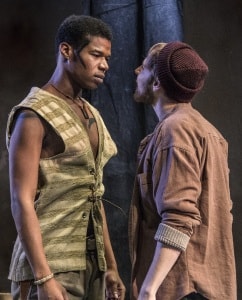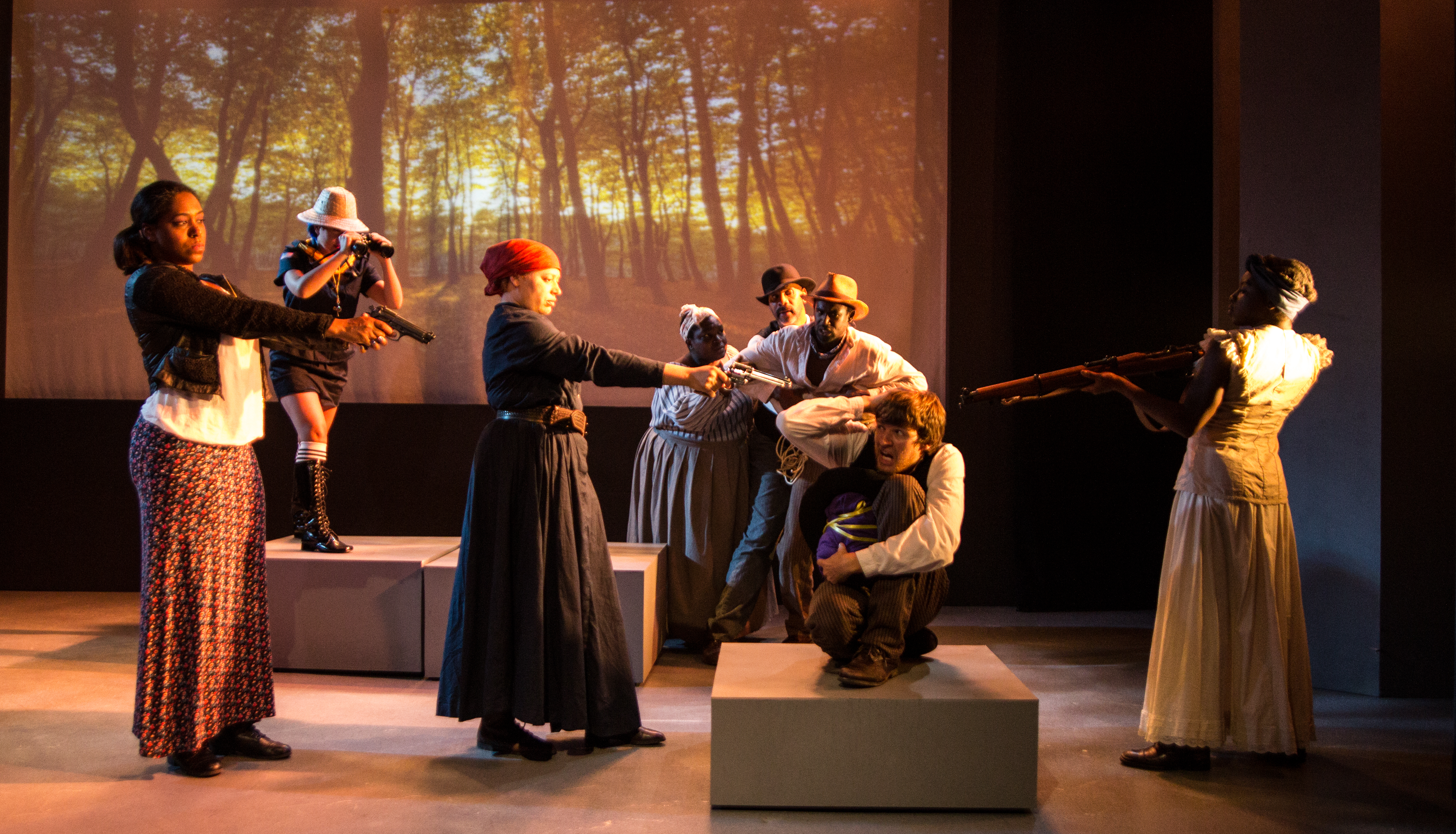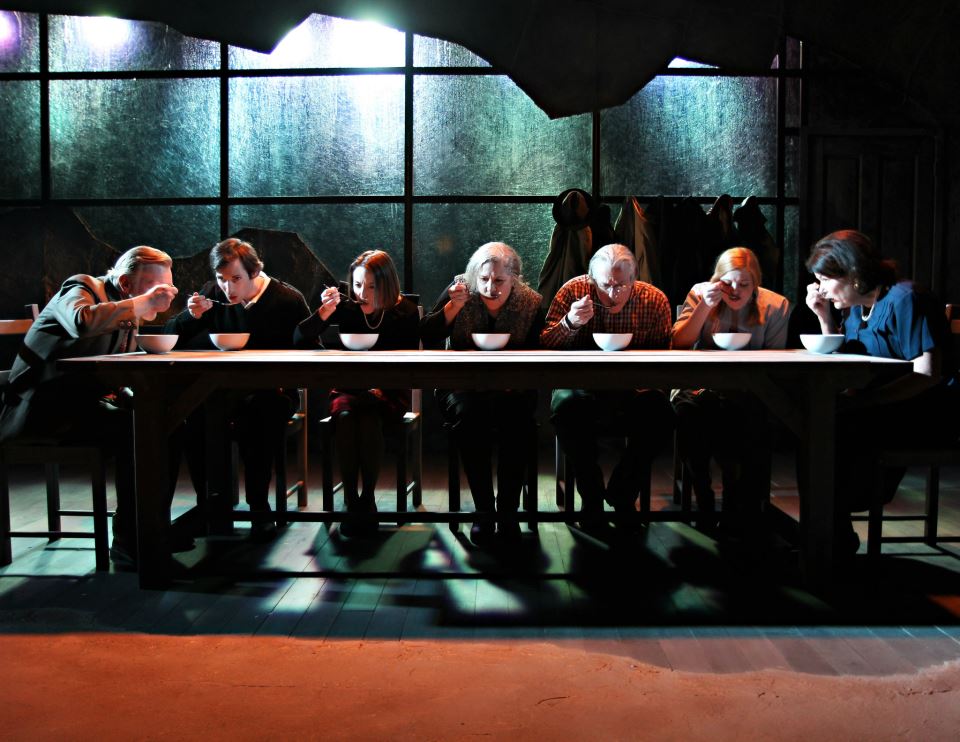Taking a page from “The Colbert Report”‘s sporadic Better Know a District Congressional interview feature (but minus the satiric intent), we’ve inaugurated this new series to introduce (or re-familiarize, as the case may be) the national theatre audience with a different TCG member theatre every other week or so. And what better theatre to kick off a series called “Know a Theatre” than a theatre that happens to be called Know Theatre?
So without further ado: Let’s get to know Know.
American Theatre: Who founded Know Theatre, when, and why?
Andrew Hungerford, Know Theatre artistic director: Jay Kalagayan founded the company as the Know Theatre Tribe in 1997. The company was originally an itinerant group of artists performing original collaborative works in bookstores and art galleries around the country. Over time the company became established as the Alternative Theatre in Cincinnati—though what “alternative theatre” means has evolved over the years.
Tell us about yourself and your connection to Know Theatre.
My friend Sean Savoie, who was then resident lighting designer for Know, was moving to St. Louis. I was around town a fair amount for other gigs, and he asked if I might like to design set and lights for the Know after he left. One 15-minute meeting over coffee with then-artistic director Jason Bruffy, and I was hired.
So I’ve been scenic and lighting designer for the Know since 2007, while also pursuing an itinerant freelance design career. I took over as artistic director in June of 2014.
What sets your theatre apart from others in your region?
We’re small, we’re flexible, we’re light on our feet. We’re run by a designer, which is unusual. We’ve got the resources to produce work that matches the production quality of any professional theatre, while being small enough that we’re able to take some considerable programming risks.
Tell us about your favorite theatre institution other than your own, and why you admire it.
I truly love the Theatre @ Boston Court in Pasadena, Calif. They have a commitment to new plays, to doing visually stunning work, and the staff is lovely. They offer ways to make their shows accessible through their $5 economic stimulus nights and free rush tickets to high school students. And the design work is always stunning. In many ways, they’re a kindred spirit to what we try to do at Know.
How do you pick the plays you put on your stage?
Here are the overall questions that guide me: Does this play demand to be staged? Is it inherently theatrical? Will it challenge our artists and audiences? Is this a story that needs to be told in a small room with an audience no more than 20 feet away? Does the play feature a voice, target audience, subject matter or theme that is underrepresented on our local stages? Does reading the play lead me to forget about all of these logistical concerns and fuel in me a need to find a way to get it on our stage?
And we also strive for gender parity in the playwrights we produce.
As we begin to assemble a collection of plays that feel like they go well together, we open it up for input from the rest of the staff. Are these achievable? Do these feel like things we want to spend our time on, etc.? My final guiding principle comes from something Stan Jensen, my undergraduate design professor, used to say: Do no stupid plays.
What’s your annual budget, and how many artists do you employ each season?
Our annual budget is somewhat north of $600,000 per year. We have a full-time staff of five, a couple of part-time artists and support staff, resident costume and sound designers who work on a per show basis. This year we’ll employ 30+ actors in our main stage season.
We also have more performance opportunities for artists through the Cincinnati Fringe Festival (35 shows, over 130 performances), our Fringe Encore Program that brings Fringe artists back through the course of the year, and our second stage programs, where we recruit local writers and performers to help make sure our space is dark as little as possible.
We also have a resource-sharing program called the Jackson Street Market, through which we provide resources to local individuals and smaller arts organizations through a system of work exchange.
What show are you working on now? Anything else in your season that you’re especially looking forward to?

Right now I’m actually directing for the first time on our mainstage—an adaptation of Moby Dick by Julian Rad. Because I’m also designing lights and set, I’m co-directing with my good friend Michael Burnham, who was a mentor of mine in grad school.
We’ve approached this process by incorporating all of the technical elements of the show from the beginning, working with scenery and lighting much farther out than would be the case in a traditional regional theatre rehearsal period. So far it’s been a blast.
I’m also really looking forward to our next show, Bureau of Missing Persons, by Lila Rose Kaplan. I attended a reading of this show 4 years ago and have been trying to get it on our stage ever since.
What’s the strangest or funniest thing you’ve ever seen (or put) on your stage?
Back in 2008, we did a production of A Very Merry Unauthorized Scientology Pageant with this concept: What if middle school kids did a show in the style of Robert Wilson? That was pretty strange.
What are you doing when you’re not doing theatre?
Because I’m also a freelance designer, usually when I’m not doing theatre, I’m still doing theatre. Or going to see theatre with my wife, screenwriter Elizabeth Martin. In the rare times that I get a day off (freelancers gotta hustle: I haven’t had a vacation in four years), I write plays, occasionally poetry, and songs that it’s a good thing no one will ever hear. I play saxophone, and dabble on piano and guitar.
I also like to take long walks. Like, really long walks. Sometimes I’ll miss the bus and think, “Oh, I’ll just walk there,” and three hours later, I finally arrive. Really, I spend so much time sitting in darkened rooms that any excuse to be outside is a good one.
What does theatre—not just your theatre, but the American or world theatre—look like in, say, 20 years?
As our media and entertainment options become more fragmented, it is my hope and dream that theatre, the liveness of it, will reassert its cultural importance. I think small, innovative regional theatres are making strides to engage people in different ways. I think our current crop of young playwrights—like Lauren Gunderson, Steve Yockey, Lila Rose Kaplan, Sigrid Gilmer, and more—are embracing a kind of theatricality that moves us away from a stuffy naturalism toward a visually rich experience that can be incredibly entertaining and simultaneously full of beauty, heartache, and the ridiculous. I think theatre, the theatres that survive as living art rather than performance museums, will continue to push the boundaries of the form and find ways to incorporate technology in a way that is meaningful and not a gimmick.
And, most of all, theatre will still be here, as it has been since the first human stood at a campfire in front of a ring of eager faces, took a breath, and spoke some words to weave a story that changed everyone who heard them. (For what it’s worth, that person probably also did some shadow puppets.)




